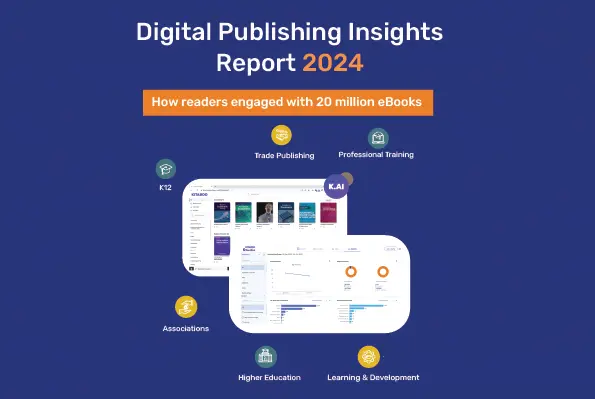
Online Magazine Mastery: Create with the Best Tools
As the world advances into the digital age, readers today increasingly seek immersive experiences online in the form of visually engaging and compelling content. One such medium that has gained the spotlight over the years is digital magazines. They are electronic versions of traditional print magazines specifically designed for viewing on digital devices like tablets and smartphones.
Today, digital magazines are extensively used to acquire new followers and retain old ones by showcasing your consistent evolution in the content creation industry. They also serve as a creative tool to spread brand awareness among your target audience in an engaging manner. Owing to their popularity and effectiveness, dynamic digital publishing platforms are reaching new heights of significance.
This comprehensive guide will furnish you with valuable insights into digital publishing and ways to leverage digital publishing platforms like KITABOO, which boasts sleek design templates and intuitive editing tools.
Table of Contents
I. Step-by-Step Guide to Creating a Digital Magazine
-
- Step 1: Have a Pre-defined Goal
- Step 2: Pick a Theme
- Step 3: Choose the Right Digital Publishing Platform
- Step 4: Start Writing Articles
- Step 5: Get Creative with Graphics
- Step 6: Pick a Template
- Step 7: Design an Appealing Cover
- Step 8: Proofread and Finalize Your Content
- Step 9: Congratulations! Let’s Get Your Magazine Published
Step-by-Step Guide to Creating a Digital Magazine
Step 1: Have a Pre-defined Goal
The first step, as is the case for most content projects in your strategy, is to establish a goal for your digital magazine. Have a plan for the outcomes and results you wish to achieve. Consider these key points:
- Will you monetize the magazine or offer it for free?
- Do you intend to inform, pitch, or amuse your target audience?
- What is the expected scale of growth for your digital magazine?
- Will you publish a new volume periodically?
Once you have clarity, develop a well-defined roadmap to achieve your goals. Start with creating to-do lists and detailed snippets about tasks at hand and their completion deadlines. Account for its objectives, scope, timeline, and budget before you begin working.
Step 2: Pick a Theme
Once you have set your goals and a roadmap, the next step is to pick an overarching theme for your digital publication.
If you are a business owner, consider its market position and key elements that attract the most customers to your brand. Look for the types of queries your customers often have and review the performance of your brand on social media based on user engagement and comments.
Brainstorm a theme idea intimately linked to your industry and one that your client base will appreciate. Picking an appropriate theme is critical for your digital magazine; otherwise, it will not pique your target users’ interest.
Step 3: Choose the Right Digital Publishing Platform
While there are several digital publishing platforms on the market, it is crucial that you pick one that best suits your requirements and offers customization features. Some platforms let you design and publish your eBook from start to finish, while others only let you publish and share an uploaded PDF file.
Check out some popular online magazine-making platforms on the market:
- KITABOO
- Visme
- Lucidpress
- FlipHTML5
- FlippingBook
- Flipsnack
You must note that most digital publishing platforms offer only flipbook-style options, which are made with static PDF files and are far from ideal for mobile viewing.
This is where KITABOO emerges as a strong recommendation. The digital textbook platform features an extensive library of templates with several customization options. This lets you tweak and edit in unlimited ways when creating Digital Magazines so you can let your creativity run wild.
Step 4: Start Writing Articles
Once you have brainstormed a theme and content strategy, your next step is to start writing magazine articles. Check and decide the total number of articles you would need to write. This will help you understand if you can take on the project yourself or if you would require a team of skilled writers.
You must stay aligned with your brand values when writing and editing content. Your articles will represent the vision of your brand and its potential growth aspects. One of the most effective ways of broadcasting your brand message is through a digital magazine.
Therefore, you must be clear about your brand vision and apply thorough research about specific topics in your article writing.
Step 5: Get Creative with Graphics
Your next step involves planning your magazine cover’s visuals and the inside pages based on the content you are writing. Account for the tone and style of your content and the preferences of your target audience. From selecting captivating images to writing catchy headlines and layout designs, each element is crucial in capturing and retaining readers’ attention.
Ensure that you are not constrained by the limitations of the digital publishing software when creating digital magazines. This is where KITABOO comes into play, offering embedding multimedia and interactivity features that include images, audio, video, read-aloud, assignment widgets and more.
Step 6: Pick a Template
Browse through a variety of digital magazine templates until you find the perfect fit for your magazine’s vision. Carefully assess the overall layout to ensure it aligns with your brand’s visual palette. Choose a template wisely because it would waste considerable time redesigning everything from scratch when filling your magazine with content.
Be thorough about your audience’s preferences, customization options, and viewing device compatibility. At last, make sure that you keep the visual style consistent across all pages to maintain a uniform visual experience.
Step 7: Design an Appealing Cover
Now that you have written all the content, decided upon a visual palette, and finalized a template, it is time to design a visually stimulating cover for your digital magazine. Start by adding the magazine title, some standout titles of the best articles featured within, the issue number and date, and your brand logo.
You can enhance your cover’s visuals by using an image that aligns with your chosen theme and brand vision. Remember that your target audience will form the first impression of your magazine through its cover, so make it memorable and indicative of your content’s quality.
Step 8: Proofread and Finalize Your Content
Do not rush into publishing your digital magazine without proofreading all the articles and ensuring the proper functionality of the interactive features on all viewing devices. This task can get tedious; hence, you should offload tasks to your team or outsource them to professional editors.
Ensure that all articles and graphics adhere to your brand guidelines and the preferences of your target audience.
Step 9: Congratulations! Let's Get Your Magazine Published
Once you have finished verifying all elements of your magazine, proceed with publishing your digital content and broadcasting it online.
- Begin by exporting your magazine in the appropriate file format is supported by your chosen digital publishing platform. Do not forget to check for proper content viewability on all supported devices.
- Next, upload your magazine to the platform and follow any specific guidelines or requirements laid out for publication.
- At last, double-check all settings and details before hitting publish to ensure your launch goes smoothly.
Do not stop at publishing, but actively promote your magazine across social media platforms where you can most effectively reach your target audience to drive engagement.
Final Words
Now that you have familiarized yourself with the steps and tools required to create an online magazine that captivates your audience, it is time to start working on your project.
Throughout your journey, remember your vision and ensure you stay committed to quality and innovation. By leveraging the right tools and resources, such as the KITABOO digital publishing platform, you can bring your magazine to life with ease and efficiency.
Connect with us now!
Discover how a mobile-first training platform can help your organization.
Kitaboo is a cloud-based platform to create, deliver & track mobile-first interactive training content.





